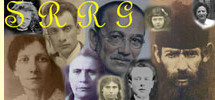"In the nineteenth century and throughout much of the twentieth, cities grew because people migrated to them from the American town and countryside and from Europe. The great waves of migration transformed American urban life, and Toledo became home to the Irish who fled starvation in the 1840s and 1850s, the [new immigrants] from southern and central Europe after 1870 and rural blacks from the South who came north as a result of opportunities created by World War I.
As a rapidly growing manufacturing city, Toledo's character was particularly shaped by the diverse ethnic groups that began arriving after 1870 from the Austro-Hungarian Empire, the Balkans, Poland, Russia, Italy and the Near East. By the turn of the century, Toledo was a cosmopolitan place, and it remained so in the twentieth century even when foreign immigration was drastically restricted after World War I. Between 1870 and 1940, the U. S. Census identified 43 distinct nationality groups in the city, eight of which (German, Polish, Canadian, Hungarian, Irish, Russian, English and Austrian) were represented by more than a thousand foreign-born residents."
Germans--including German Jews who began arriving from Cincinnati in the mid-1840s--came to Toledo in large numbers as part of the great wave of German migration into the Midwest in the mid-nineteenth century. From the early years, Germans were community leaders. They were well represented among the early land buyers and town promoters. Toledo has not been identified as a German city in the same fashion as St. Louis, Milwaukee or Cincinnati, but Germans shaped the institutions and character of community life. A visitor in 1873 noted an openness and freedom that he attributed to the Germanic influence. [The social life of the Toledoans, like their business life, moves with the greatest freedom,] he wrote. [No trace of the puritanical austerity which has cramped and restricted the social ability of other great cities can be found here].
The Bulgarian "colony" settled near downtown East Toledo. Many came to work for Willys-Overland. "In the 1920s, Syrians settled northeast of Cherry Street. Czechs lived near Collins Park in East Toledo. Russians and Italians, "like the Germans tended to disperse throughout the city.
An old fashionable residential section that had been part of early Vistula (North End) attracted large numbers of Greeks, Syrian, Lebanese and Near Eastern groups in the early twentieth century. In the 1920s Syrians settled northeast of Cherry Street. Toledo also developed neighborhoods along geographic and economic lines, including South End, East Side, Old West End and West Toledo."(9)
|




